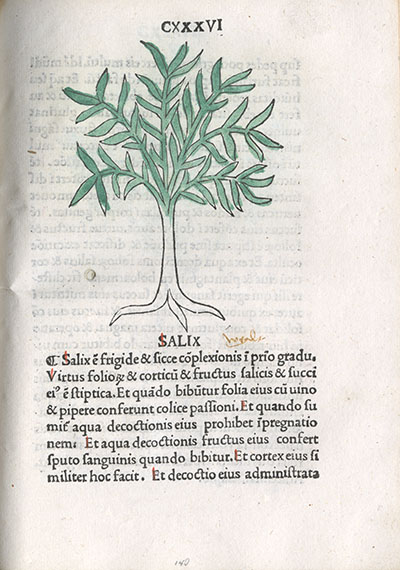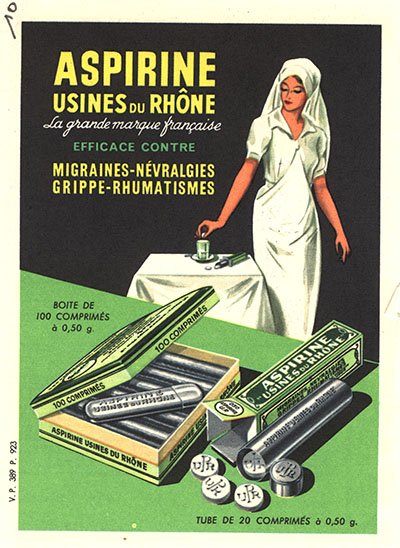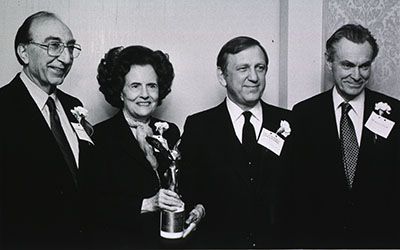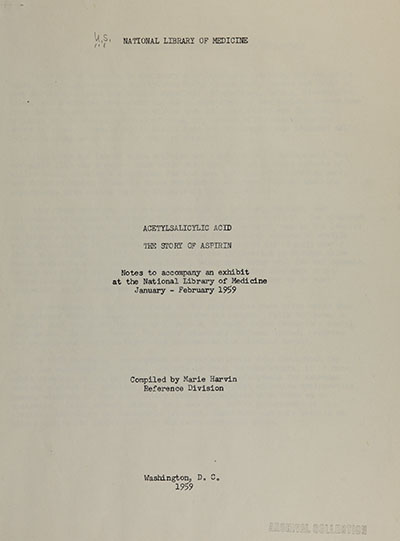NLM’s Latest Online Exhibition Revisits the Story of Aspirin
The National Library of Medicine (NLM)’s new online exhibition Take Two and Call Me in the Morning: The Story of Aspirin Revisited, examines how modern organic chemistry and technology isolated, then synthesized nature’s properties into aspirin, a ubiquitous remedy for a constellation of ailments.
For centuries, people used willow bark to relieve pain and treat fevers. However, it was not until the late 1800s that scientists developed an analog of the active ingredient in willow bark, creating the essential drug that is now part of everyday life. By the latter half of the 20th century, scientists had begun examining aspirin for benefits beyond pain relief and fever reduction.
Take Two and Call Me in the Morning revisits the content of a 1959 NLM physical display, Acetylsalicylic Acid: The Story of Aspirin. Curated by Anne Rothfeld, PhD, of NLM’s History of Medicine Division, the updated and expanded exhibition brings the story to a global audience online and showcases newer items from the NLM collection alongside books from the original exhibition.
The online exhibition includes a digital gallery of works related to the history of aspirin from the collections of the NLM, which are also available in their entirety in NLM Digital Collections, as well as a selection of trusted NLM health information resources. Beginning in 2024, a traveling banner adaptation of the exhibition will tour libraries and cultural institutions around the country.
To learn more, visit Take Two and Call Me in the Morning: The Story of Aspirin Revisited. To explore other NLM exhibitions about topics in the social and cultural history of science and medicine, go to the Exhibition Program website.

From ancient times, physicians and healers used willow bark to relieve pains, ease inflammation, and reduce fevers.
Illustration of white willow tree from Herbarius, Arnaldus de Villanova, 1499
Courtesy National Library of Medicine

The value of aspirin as a therapeutic increased during World War I. The French manufacturer Usines du Rhône used the visual trope of the hospital nurse to assure customers of aspirin’s effectiveness.
Advertisement for Laboratoire des Produits Usines du Rhône, ca. 1900s
Courtesy National Library of Medicine

Swedish biochemist Sune K. Bergström (1916–2004) shared the 1982 Nobel Prize in Physiology or Medicine with two other scientists for breakthroughs in research into aspirin’s anti-blood clot ability.
Sune K. Bergström (right) with (from left to right) Mary Lasker, Michael DeBakey, and Congressman John Brademas, ca. 1960s
Courtesy National Library of Medicine

Take Two and Call Me in the Morning expands upon the content of a 1959 NLM exhibition,
Acetylsalicylic Acid: The Story of Aspirin.
Acetylsalicylic Acid: The Story of Aspirin, notes to accompany an exhibit at the National Library of Medicine, Marie Harvin, 1959
Courtesy National Library of Medicine

